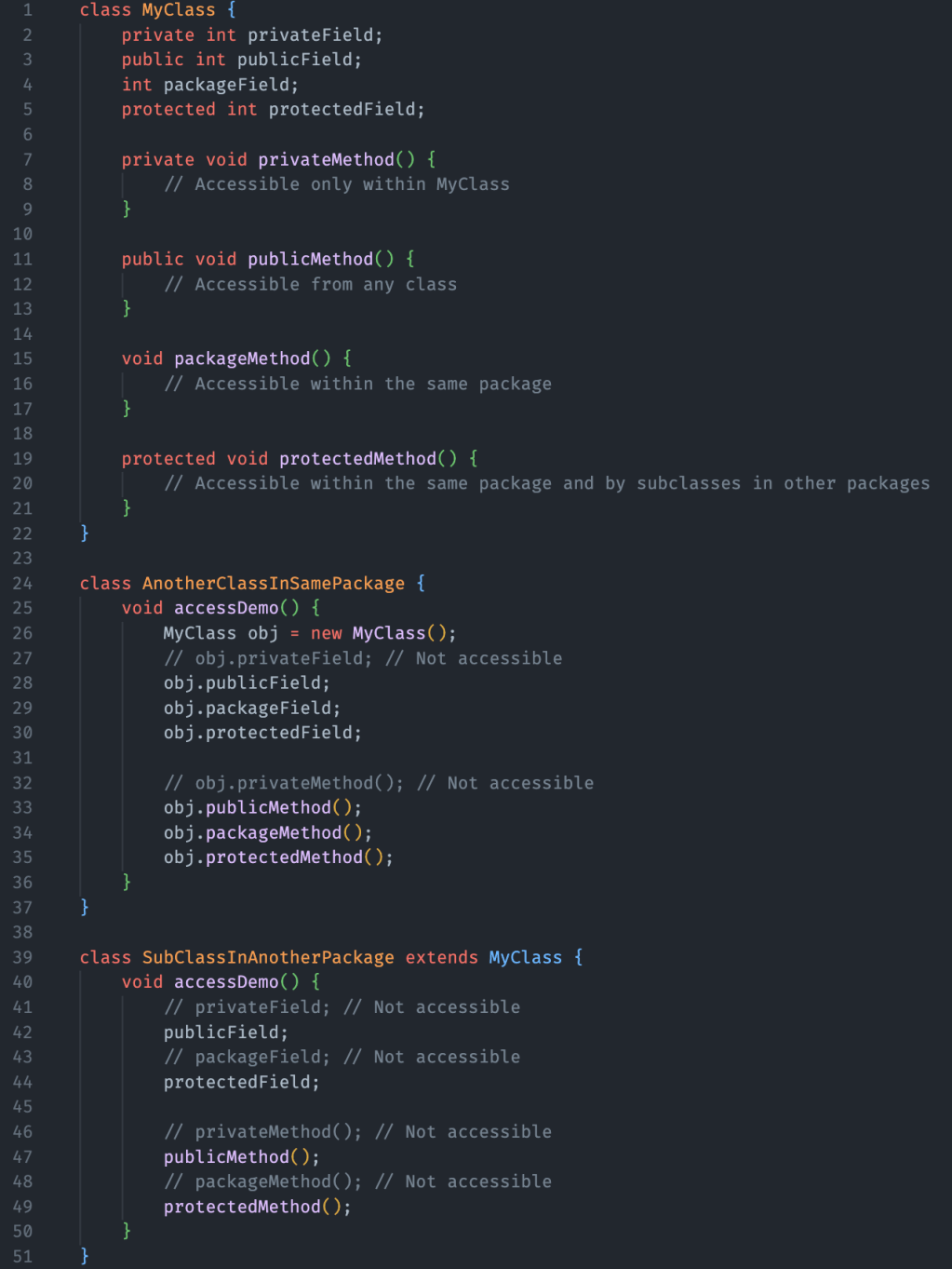Hello, fellow code enthusiasts! Today, we are going to dive into the world of access modifiers in Java. Access modifiers control the visibility and accessibility of class members, such as fields, methods, and inner classes. In Java, there are four access modifiers: private, public, package (default), and protected. In this blog post, we will discuss the differences between these access modifiers, provide examples of their usage, and share some best practices to help you write clean and maintainable code. So, let’s get started!
Private Access Modifier
The private access modifier is the most restrictive level of access control. When a member is declared private, it can only be accessed within the same class.
class MyClass {
private int privateField;
private void privateMethod() {
// Accessible only within MyClass
}
}
Public Access Modifier:
The public access modifier is the least restrictive level of access control. When a member is declared public, it can be accessed from any class within the same package, as well as from classes in other packages.
class MyClass {
public int publicField;
public void publicMethod() {
// Accessible from any class
}
}
Package (Default) Access Modifier
When no access modifier is specified, the member has package (default) access. This means that it can be accessed from any class within the same package, but not from classes in other packages.
class MyClass {
int packageField;
void packageMethod() {
// Accessible within the same package
}
}
Protected Access Modifier
The protected access modifier allows a member to be accessed within the same package and by subclasses in other packages. This is useful when you want to restrict access to a member, but still allow subclasses to inherit and modify its behaviour.
class MyClass {
protected int protectedField;
protected void protectedMethod() {
// Accessible within the same package and by subclasses in other packages
}
}
Comparison of Access Modifiers
To summarize, here’s a quick comparison of the different access levels in Java:
- Private: Accessible only within the same class.
- Public: Accessible from any class.
- Package (default): Accessible from any class within the same package.
- Protected: Accessible within the same package and by subclasses in other packages.
Best Practices for Using Access Modifiers
To ensure clean, maintainable, and secure code, consider the following best practices when using access modifiers in Java:
- Use the principle of least privilege: Start with the most restrictive access level (private) and only increase visibility when necessary.
- Encapsulate class internals: Use private access for fields and methods that should not be exposed to the outside world, and provide public or protected accessors (getters/setters) when needed.
- Leverage protected access for inheritance: Use the protected access modifier when you want to allow subclasses to inherit and modify a member’s behavior, while still restricting access from unrelated classes.
Final Note
In this blog post, we’ve explored the world of access modifiers in Java, discussing the differences between private, public, package (default), and protected access levels. By understanding these access modifiers and following best practices for their usage, you can write clean, maintainable, and secure Java code.
📚 Further Reading & Related Topics
If you’re exploring access modifiers in Java (private, public, package, and protected), these related articles will provide deeper insights:
• Understanding Java Encapsulation: A Deep Dive into Classes and Objects – Learn how access modifiers are integral to encapsulation in Java, controlling the visibility of class members and enforcing data security.
• Java 9 and the Introduction of Modules: Managing Access to Code – Discover how Java modules introduced with Project Jigsaw expand access control in larger codebases, building upon the foundations laid by traditional access modifiers.









Leave a comment